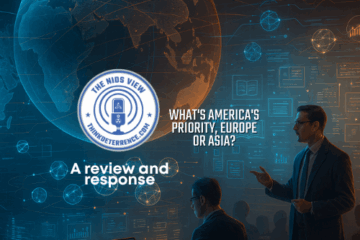On February 22, 2024, the Federal Reserve Bank of New York updated its list of labor outcomes by major for college graduates. Surprisingly, the data revealed that aerospace engineering is the fourth most unemployed college major, beaten only by fine arts, liberal arts, and art history. Conventional thinking argues that engineering jobs are some of the most stable and financially rewarding; so why does aerospace engineering make this list?
Though data on the breakdown of aerospace engineers employed in space-related projects versus solely terrestrial-based aircraft is not readily available, the above statistic represents a worrying trend for a field (space) that is heavily reliant on aerospace engineers and at the center of American preeminence. More concerning, it is important to also ask if these known unemployment numbers are a deterrent for graduates entering into a dedicated space-focused workforce. Space is a critical part of national security and without a comprehensive understanding of how to entice applicants into priority positions, the new space race with China may not be so easily won.
On the surface, the situation does not appear dire. The Bureau of Labor Statistics estimated aerospace engineering jobs should grow by 6 percent between 2021 and 2031. However, the Bureau of Economic Analysis reported that the number of space private-sector jobs is down 12,000 from a decade prior. Additionally, an article from major consultant McKinsey & Company noted an 8 percent decline in aerospace, aeronautical, and astronautical engineering hires over the past five years within the broader aerospace and defense sector. It characterized the situation as an “intense competition for talent,” with younger graduates more interested in pursuing the highly lucrative computer and software engineering careers.
“Right now, we have a STEM crisis,” Mel Stricklan of the Space Workforce 2030 initiative spoke in an interview at the 39th Space Symposium. Further exacerbating the space employment challenge is how the overall number of science, technology, engineering, and math (STEM) graduates decreased despite the number of job openings increasing. As the purpose of her organization’s mission is to develop the next base of qualified professionals, Stricklan was passionate in suggesting, “The next generation needs to understand that they have a place in space.” In the same interview, Mike French, formerly Vice President of Space Systems for the Aerospace Industries Association, warns companies need to pay attention to their retention rates, the impact of retirements on workforce demographics, and security clearance requirements dissuading applicants.
According to Pew Research, a majority of Americans believe the US needs to be a leader in space, including from within the private sector. Though analysts predict a space market valuation of over $1 trillion in under a decade, it is not yet clear if the path to reach this estimate is through increasing the number of professionals and therefore varied projects in the industry or by simply increasing the price to fund space projects already in existence.
For a recent parallel example, the collapse of cryptocurrency bank FTX was in part due to customers discovering sister-company Alameda Research artificially propped up the value of FTX by inflating the value of FTX’s nascent exchange coin rather than providing liquidity backed by fiat or already proven cryptocurrencies. Looking at the current trends in the space market, the Space Launch System rocket produced by Boeing keeps increasing in cost for the Artemis lunar exploration mission despite NASA’s goal to switch contracting methods. Young graduates may be paying attention to these trends and hedging their bets elsewhere.
As Americans wait for the space tourism industry to flourish, traditional aerospace companies are generally limited to selling only to governments and major commercial companies. When a project cancellation hits the industry, such as the OSAM-1 satellite mission, the engineering specialists and mission support staff find themselves in a precarious position of not knowing if they will remain employed. Following this development came whispers of more contractor layoffs hitting the Goddard Space Flight Center after previous cuts in 2023, although NASA committed to funding the 450 personnel working on the program through fiscal year 2024. The recent news of cuts at NASA’s Jet Propulsion Laboratory, which saw 8 percent reductions of the workforce following budget cuts to the Mars Sample Return program, also adds to the uncertainty of job stability for the space industry. Without a new project to immediately switch to, the unemployment rate of aerospace engineers may be partially explained by this phenomenon.
A lack of understanding of why engineers are moving away from space-related careers displays an incongruity within a space strategy that calls for the integration of commercial and military space capabilities. Paid training and a guaranteed job after completion will be necessary to persuade the upcoming Generation Z to choose a space career. Regardless of the numerous factors contributing to a decreasing space workforce, companies and government agencies must first recognize the extent of the problem before an adequate solution can be developed. Whatever solution industry and government leaders may choose, it is important it comes soon.
Alexis Schlotterback is an Analyst at the National Institute for Deterrence Studies. Views expressed in this article are the author’s own.
About the Author

Alexis Schlotterback
Alexis Schlotterback is an analyst at the National Institute for Deterrence Studies and one of the NIDS Academy Administrators. Her experience includes a Masters from Missouri State’s School of Defense and Strategic Studies and participation in the National Nuclear Security Administration Graduate Fellowship.





Very well written indeed. I am, and always have been a very large fan.
Mr. T
Very thoughtful article on something that is not at the forefront of most of our minds. Thank you for publishing this great piece and hopefully more great minds will take action and start providing solutions.